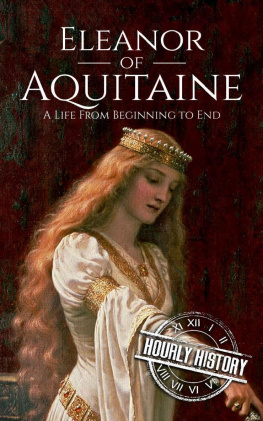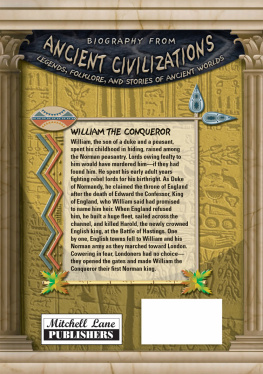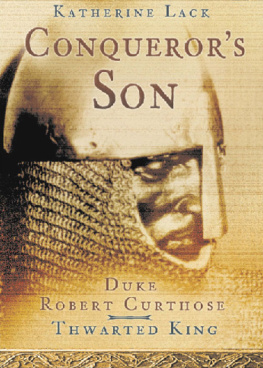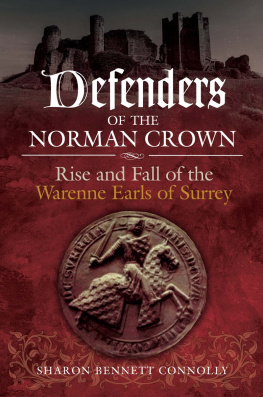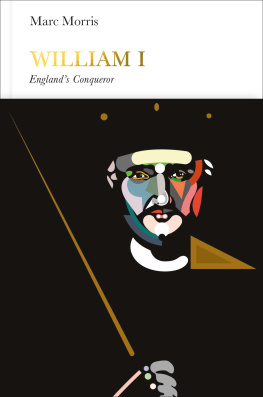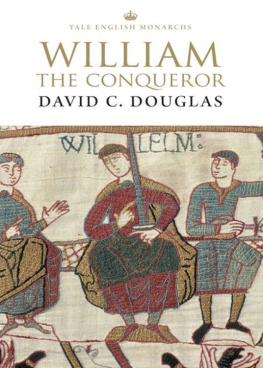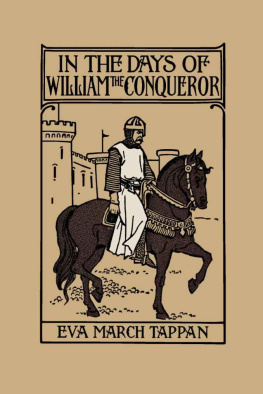About the Author
Mary McAuliffe received a PhD in history from the University of Maryland and has taught at several universities. For many years a regular contributor to Paris Notes , she has traveled extensively in France and recently published Dawn of the Belle Epoque: The Paris of Monet, Zola, Bernhardt, Eiffel, Debussy, Clemenceau, and Their Friends . She is also the author of Paris Discovered: Explorations in the City of Light . She lives in New York City with her husband.
Epilogue
F ortune, Orderic wrote, is like a turning wheel. One moment she suddenly lifts a man up, the next throws him down.1
With Gaillards fall, the wheel of fatea staple of medieval thoughthad turned, raising up Philip Capet and bringing down the Plantagenets far-flung empire with a mighty crash. Roger of Wendover tells us that when informed of Gaillards fall, King John sent a message informing his overseas barons that they were to expect no assistance from him. The outcome was stunning. With all kinds of defence failing in those provinces, the whole of Normandy, Tours, Anjou, and Poictou [ sic ], with the cities, castles and other possessions fell to the dominion of the king of the French.2
Although the Plantagenets would for a time retain portions of Eleanors lands below the Loire, they and their successors increasingly operated as kings of England rather than of a cross-Channel empire. Philip would go down in history as Philip Augustus, the great conqueror, while John, to most mens way of thinking, would best be forgotten.
As for Normandy, many of its nobleswho owned lands on both sides of the Channeldecamped for England, and Philip made sure that those who remained understood where power now lay. But Normandy did not merely change sovereigns. Absorbed into the kingdom of France, it quickly lost the privileged position it had once held under Englands kings. Even Normandys ducal title retained little of its previous luster. Philip disdained to claim the title for himself, and certainly was not interested in bestowing it upon another. Subsequent French kings occasionally conferred the title on family members, but it was Englands monarchs who would continue to value it, ruling as duke of Normandy over the tiny Channel Islands, which originally were part of Normandy and to this day remain dependencies of the British Crown.
For several centuries, Englands monarchs also continued to claim all of mainland Normandy, in addition to the rest of their former French possessions. They attempted to win these back during the Hundred Years War, and the two nations tangled in recurring hostilities until the end of the Napoleonic Wars in 1815. Despite Europes relative peace during the nineteenth century, this long-standing enmity did not really begin to abate until World War I, when British and French together fought the Germans on French soil.
But it was World War II that truly brought this long and blood-soaked history to a close. Cross-Channel rivalries continue, and may do so for all time, but when the Allies crossed the Channel to the beaches of Normandy, this second Norman invasion came from England, with liberation as its goal. As a recent commemorative plaque in Saint-Clairsur-Epte puts it: To the Normans, whose victorious daring linked the destinies of the French and the English.
As for Gaillard, this twelfth-century fortress continued for many years to offer a rugged challenge to would-be attackers. During the Hundred Years War, more than two centuries after Gaillards birth, Lionhearts bold fortification changed hands several times, but only after lengthy sieges.
Despite the introduction of gunpowder, Gaillard remained an active fortress until the late sixteenth century, whenduring the course of fierce civil and religious warfareit held out under siege for an impressive two years. But once under Henri IVs control, it fell on hard times. The king agreed with local authorities that Gaillard should be destroyed, to prevent it from harboring armed bandits or falling into rebel hands. Nearby convents now received permission to go to work on the venerable castle, removing its stones to repair their own religious buildings. This demolition continued during the reign of Louis XIII and Louis all-powerful minister, Cardinal Richelieu, who was responsible for razing countless castles throughout France. With its towering donjon decapitated and other critical portions dismantled, Lionhearts splendid fortress began its slow and irreversible decline.
The seventeenth and eighteenth centuries forgot Gaillard, but nineteenth-century romantics rediscovered it, drawn to its brooding ruins. More recent visitorspounded by a century of totalitarianism, terrorism, and wartend to see a fortress flexing its muscles rather than a castle in the moonlight. Yet even the most cynical may find there is something about the place that moves themwhether it is Gaillards direct link to the past, or the clean, almost contemporary starkness of its lines.
Normandy has undertaken a massive restoration effort, but Gaillard will never completely recover from all those centuries of deliberate destruction and neglect. Yet more than a millennium after Rollo trod this soil and eight centuries after Lionheart set to work here, Chteau-Gaillard still dominates its chalky cliff above the Seinecrowning Andelys heights and linking our century with that distant age when the royal houses of England and France began their mighty struggle for dominance.
Key People
Abbot Suger (ca. 10811151): Abbot of Saint-Denis, biographer of Louis VI, and counselor to Louis VI and Louis VII of France. Served as a regent of France during Louis VIIs absence while on the Second Crusade.
Adele of Champagne (ca. 11401206): Third wife of Louis VII of France and mother of Louis only son and heir, the future Philip II. Her brother Henry I of Champagne was married to Marie, the daughter of Louis VII of France and Eleanor of Aquitaine; her brother Theobald V of Blois was married to Maries sister Alix.
Admar, or Aymar (Aimar), count of Angoulme: Father of Isabelle of
Angoulme and half-brother of Aimar V of Limoges.
Agnes of Meran: Called Marie by some chroniclers. Daughter of the German duke of Genest or (according to some chroniclers) the duke of Moravia and Bavaria. Third wife of Philip II of France, whose marriage (and the legitimacy of her children by Philip) was disputed by Philips second wife, Ingeborg of Denmark, and by Ingeborgs supporters, including the pope.
Aimar V of Limoges , viscount of Limoges: Lord of Chlus, where Richard Lionheart died.
Alais of France (11601220): Second daughter of Louis VII of France and Constance of Castile. Betrothed as a child to Richard Lionheart, she remained unwed for years, subject to rumors that Richards father, Henry II of England, had made her his mistress and that she had borne him a child. Eventually her half-brother, Philip II of France, arranged for her return to France and her marriage to the count of Ponthieu.
Arthur I, duke of Brittany (11871203): The posthumous son of Geoffrey of Brittany, and grandson of Henry II of England. Regarded as Richard Lionhearts heir until Arthur came under the influence of Philip of France. Captured by John, Arthur disappeared; it was rumored that he was murdered by John himself.
Baldwin de Bthune, count of Aumale: Devoted follower of Richard Lionheart, who accompanied Richard on his ill-fated journey from the Holy Land and served as a hostage for the remainder of Richards ransom after Richards departure from prison.


